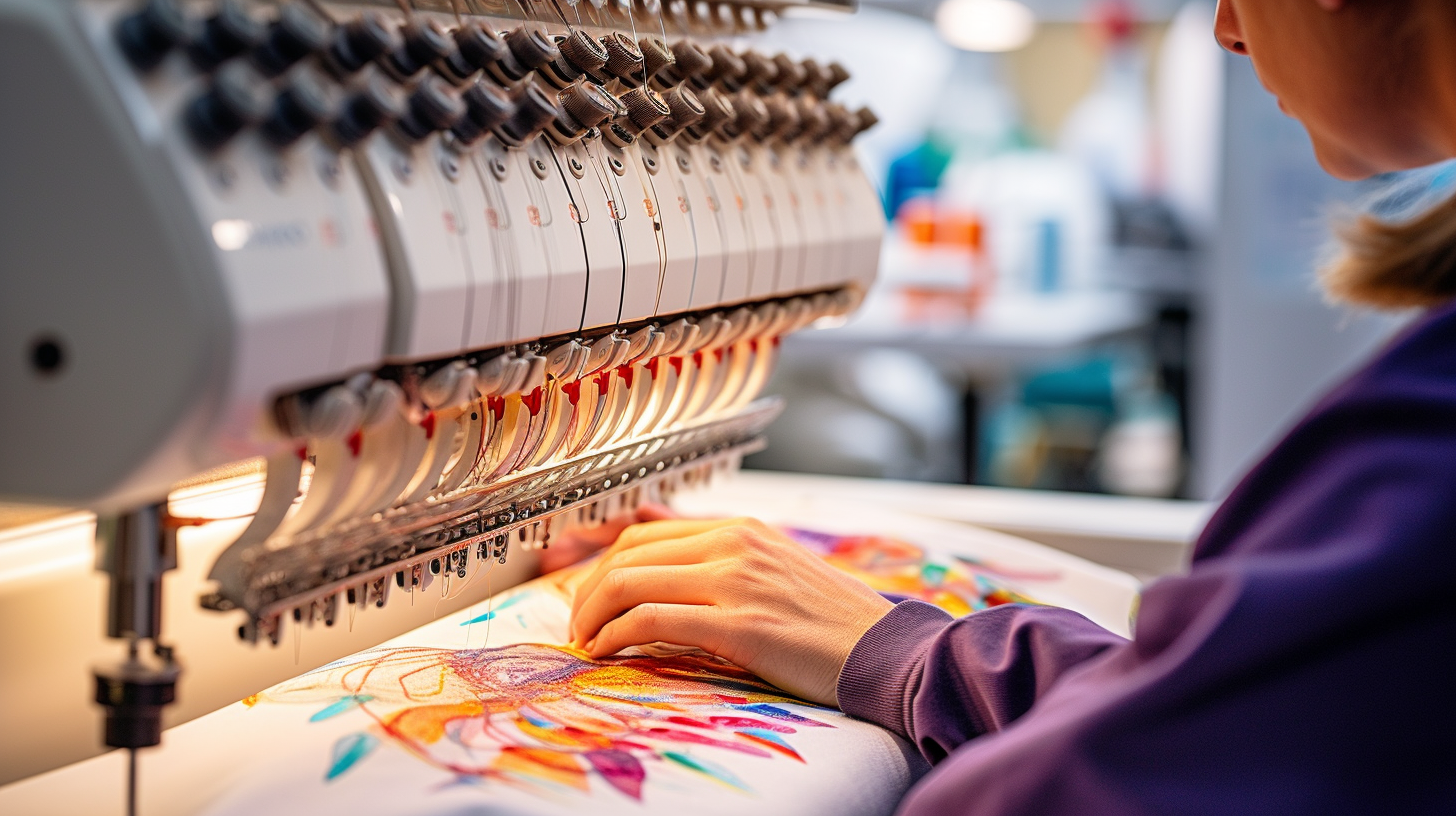Streamlining the Art of Needlework Digitizing: Step-by-Step Overview
Embroidery digitizing is a careful craft that demands precision and creativity. As modern technology proceeds to development, the digitization process has become much more available, allowing fanatics to bring their complex designs to life with ease. In this overview, we will certainly decipher the complexities of needlework digitizing, breaking down each action systematically to improve the procedure and equip both novices and seasoned embroiderers alike. Keep tuned to find how you can streamline this elaborate art kind and transform your innovative visions into perfectly embroidered masterpieces.
Recognizing Embroidery Digitizing Software Application
Needlework digitizing software application works as an important device for transforming intricate styles right into digital styles suitable with embroidery devices, promoting accurate sewing and personalization. This customized software allows individuals to import numerous image data layouts, such as JPG or PNG, and convert them into embroidery machine-readable styles like DST, EXP, or PES - Digitizing for Embroidery. By making use of features like stitch modifying, padding options, and thread shade option, digitizing software enables users to manage every facet of the design process
Furthermore, progressed needlework digitizing software offers tools for creating complex styles, changing stitch thickness, and incorporating elaborate details. Users can also preview the design before stitching it out, guaranteeing accuracy and lessening mistakes. Furthermore, lots of software program programs give automated attributes that aid streamline the digitizing process, saving time and initiative.
Comprehending the abilities of embroidery digitizing software application is necessary for accomplishing high-quality lead to needlework jobs. By grasping this tool, needlework fanatics and experts can release their imagination and bring elaborate designs to life with accuracy and effectiveness.

Selecting the Right Design File
After familiarizing yourself with the capabilities of embroidery digitizing software, the following critical action in the procedure is picking the best style declare your project. Digitizing for Embroidery. When choosing a layout documents for needlework digitizing, it's important to take into consideration the intricacy of the design, the dimension of the end product, and the kind of textile you will certainly be dealing with
For intricate designs with great details, a high-resolution image or vector documents is suggested to guarantee that the embroidery machine can properly duplicate the style. In addition, the size of the last item plays a substantial function in selecting the appropriate style file. Larger layouts may require higher resolution data to preserve clearness and sharpness.
In addition, the type of material you will certainly be embroidering on affects the selection of design data. Various fabrics might require modifications in the layout file to make sure that the stitches are properly aligned and the design looks like planned. By thoroughly choosing the appropriate design file based on these aspects, you can establish yourself up for an effective needlework digitizing procedure.
Digitizing Tools and Techniques
Using specialized software application and accuracy strategies, digitizing tools are vital in changing intricate styles right into embroidery-ready data. Needlework digitizing software program, such as Wilcom, Hatch, or Embrilliance, provides the necessary platform to transform artwork into stitch data. These programs provide functions like stitch editing and enhancing, underlay options, and lettering tools to ensure the style equates flawlessly find out here onto fabric.
One of the key strategies in digitizing is developing a clear path for the embroidery device to comply with. This entails digitizing each component of the style with precision, figuring out stitch types, densities, and directions. By utilizing devices like digitizing tablets or software-specific plugins, embroiderers can attain a high degree of precision in their digitized styles.
Additionally, mastering the art of padding stitching is crucial for producing top quality needlework. Underlay stitching stabilizes the textile and develops a structure for the layout, making certain that the end product is both aesthetically attractive and resilient. By comprehending these digitizing tools visit the website and strategies, embroiderers can raise their craft and bring detailed layouts to life with accuracy and efficiency.
Customizing Stitch Kinds and Directions
The selection of stitch types can substantially impact the general appearance and structure of the stitched design. By tactically incorporating these stitch types, embroiderers can achieve depth and measurement in their designs.
Moreover, the direction of stitches plays an important role in improving the visual charm of the final embroidery. By exploring with various stitch angles and patterns, embroiderers can bring their layouts to life with impressive information and intricacy.
Screening and Refining Your Digitized Style
To make certain the accuracy and quality of your digitized design, comprehensive testing and refinement are essential action in the embroidery digitizing procedure. As soon as you have actually finished the digitization of your style, it is important to evaluate it before continuing with the actual embroidery. Testing allows you to recognize any type of prospective issues such as string breaks, sew density problems, or design distortions that might impact the final result.

After screening, it is necessary to fine-tune your digitized design based upon the feedback from the examination sew-out. This might entail tweaking stitch setups, changing densities, or making adjustments to the general design to achieve the preferred outcome. By iterating with testing and improvement, you can tweak your digitized style to perfection prior to progressing with the real embroidery procedure.
Final Thought
In conclusion, understanding the art of needlework digitizing requires visit the website a comprehensive understanding of the software, picking the ideal design documents, using digitizing devices and methods, tailoring stitch types and instructions, and testing and improving the digitized design. By adhering to these steps, embroiderers can streamline the digitizing process and produce premium stitched styles with accuracy and efficiency.